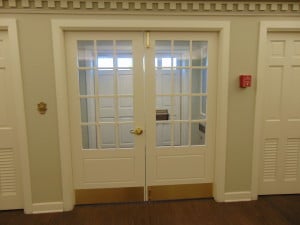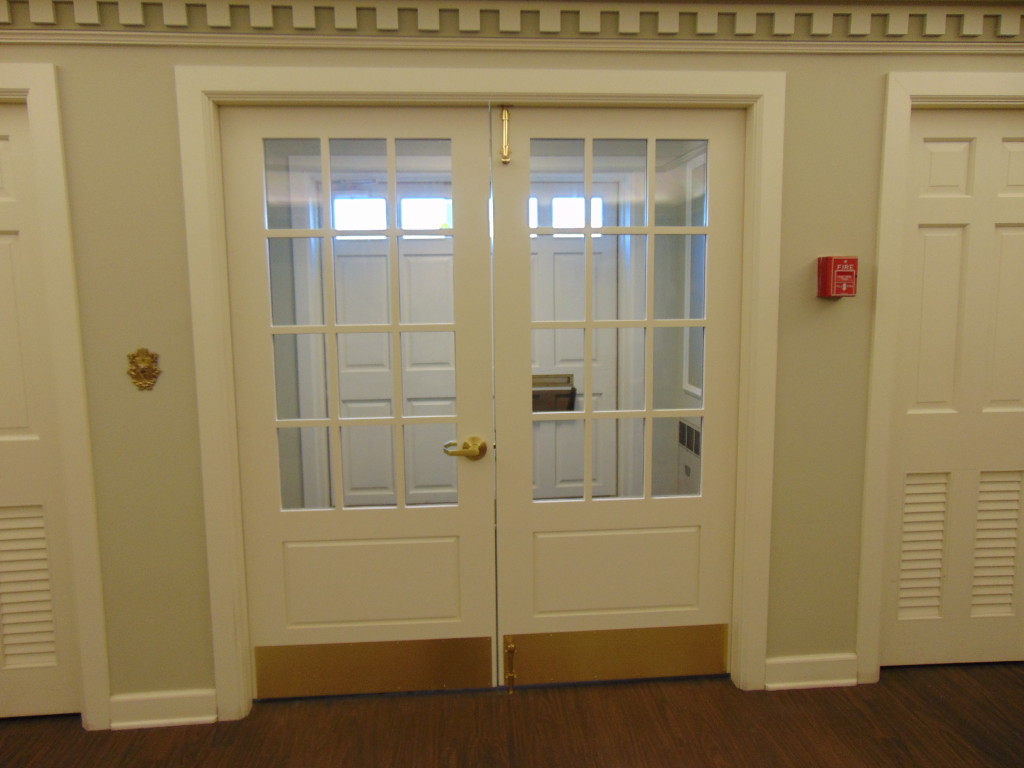Building a good bullet resistant barrier systems with access control requires seamless collaboration between vendors. This doesn’t just reduce stress and lower cost (although it always does the former and almost invariably the latter)—it also results in systems with a tighter fit, smoother look, and altogether better performance. Seamless collaboration is the only way to get a seamless system: One that operates smoothly, consistently, and doesn’t tip off possible attackers.
Access Control is a System
In contrast to traditional door locks—which are interchangeable stand-alone pieces that can be easily swapped out—a modern access control system is just that: A system, relying on dedicated software. While the initial installation and configuration is more complicated than just having a locksmith come in, the resulting functionality is an order of magnitude simpler to deal with and more useful.
For example, key management is traditionally a nightmare—staff turnover, new hires, lost and stolen keys, special access needs, contract maintenance teams, security staff, etc. With an access control system, adding or removing access is just a matter of keystrokes. If someone looses an RFID fob or keycard, issuing a new one is significantly cheaper and easier than having a new key cut (or, in the worst-case scenario, having to re-key all the doors accessed with a given key). In a building-wide system, each individual user can have customized access to different spaces without having to carry an entire ring of keys, and can be granted access on a temporary or conditional basis (e.g., only on weekdays, only between 8am and 5pm, only after business hours, etc.). A system can have 100,000 users or just 10, it can be accessed via keypad, card, card and PIN, RFID tag, biometrics, and so on. Additionally, the system can log users as they come (and go), or pass between building sectors.
“These are really incredibly flexible systems,” Eric Malzahn, a Total Security Solutions project manager, explains. “So, before an architect or facility owner starts talking to any vendors, what’s most important is to really take a look at the end-users’ daily operations, how they are functioning every single day, so that the system can be designed around that.”
Secure Access Demands Collaboration
Eric notes, “With such powerful systems, it’s really important to get all the details right, all the parts meshing. What separates TSS is that we’re willing to work with other security vendors as equals. Other companies in our industry really shy away from that. They don’t understand access control, so they don’t want to deal with it. We’re not scared of these types of challenges. We’ll customize our systems to make it work however the end-user wants. We always take the time to research it and work with others to make it happen.”
Such collaborations can be very straightforward. It might take nothing more than a few quick phone calls, and then supplying doors prepped for specific hardware. TSS can also design and fabricate bullet resistant barrier systems around the access control system, which can include integrating power supplies feeding the appropriate voltage, installing electric strikes and electrified hinges, and so on, so that the access control system can be easily wired up once the barrier is installed. “We’ve done full-blown access control systems with everything: key cards, electric strikes, Aiphone, the works—much of it buried in the door or frame, so you don’t have external wires and ‘after-market add-ons’ showing.”
This isn’t limited to new construction or entirely new systems. “For example, we were working with a client in Florida who had an Aiphone system in place.This brand of audio/video intercom system is especially popular with schools. “We came in, took measurements, investigated what we need to do to keep their existing access control system while improving on their security by seamlessly integrate access control with a fully rated door.”
A Security System is Only as Good as its Doors
Instead of bulk-purchasing mass-produced pre-fab doors, TSS fabricates all of their doors entirely in-house. In part, this is simply a matter of practicality: A pre-fab door is never going to be a perfect fit. If you want a system that looks good and works smoothly, you need a custom-tailored door. By building their own doors, TSS can be sure that any hardware the end-user wants will be perfectly fitted to the door, and that the door can be properly prepped for seamless integration with any access control scheme.
But for TSS CEO Jim Richards, custom bullet resistant doors are about more than just being practical. “We always want our work to be a cut above,” he explains. As an example, he shares these 100% custom interior double doors, built for a sensitive corporate facility. “This is the kind of custom work we can do on a one-off. No one in our industry has ever done doors like these.”

At first glance, they seem like standard vestibule doors.
“But those door lites aren’t individual panes—each door has a single-piece of monolithic acrylic, visually divided by false muntins that we built from scratch, precisely blended to the surface of the door”—which is backed with bullet resistant fiberglass, and also conceals access control devices integrated with the building-wide system.”
In most cases a buyer will order a door either veneered, or simply primed to be painted on site. For this particular job, they needed a quick, quiet, clean installation. The client also wanted to assure durability, so TSS handled a custom paint job, as well as all of the brass hardware, perfectly matching every other piece in the building.
The result: security-rated doors and advanced access control systems, seamless integrated to fade into the background.
NEXT STEPS:
- Sign up for our newsletter to stay up-to-date with the latest industry news
- Follow us on Twitter, Facebook or LinkedIn
- Download our Ultimate Guide to Bulletproof Glass and Bullet Resistant Barriers infographic


